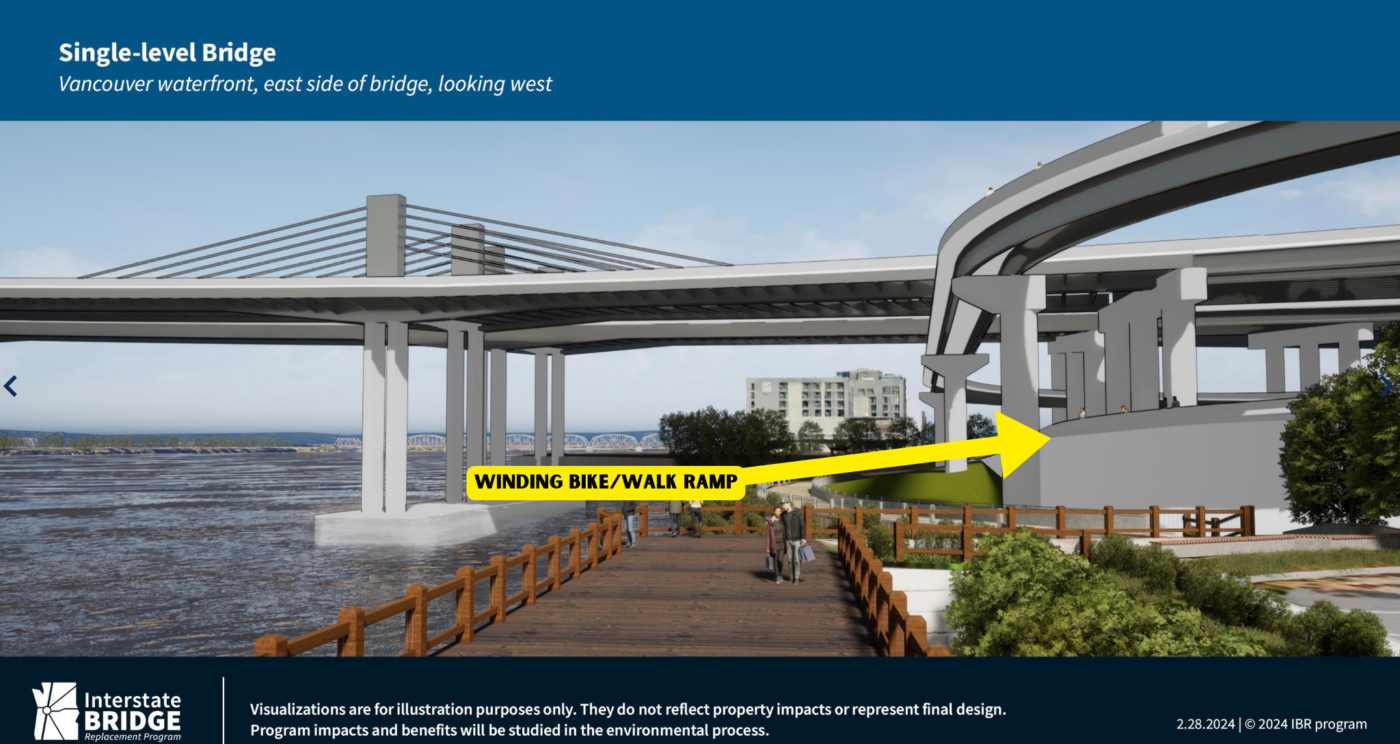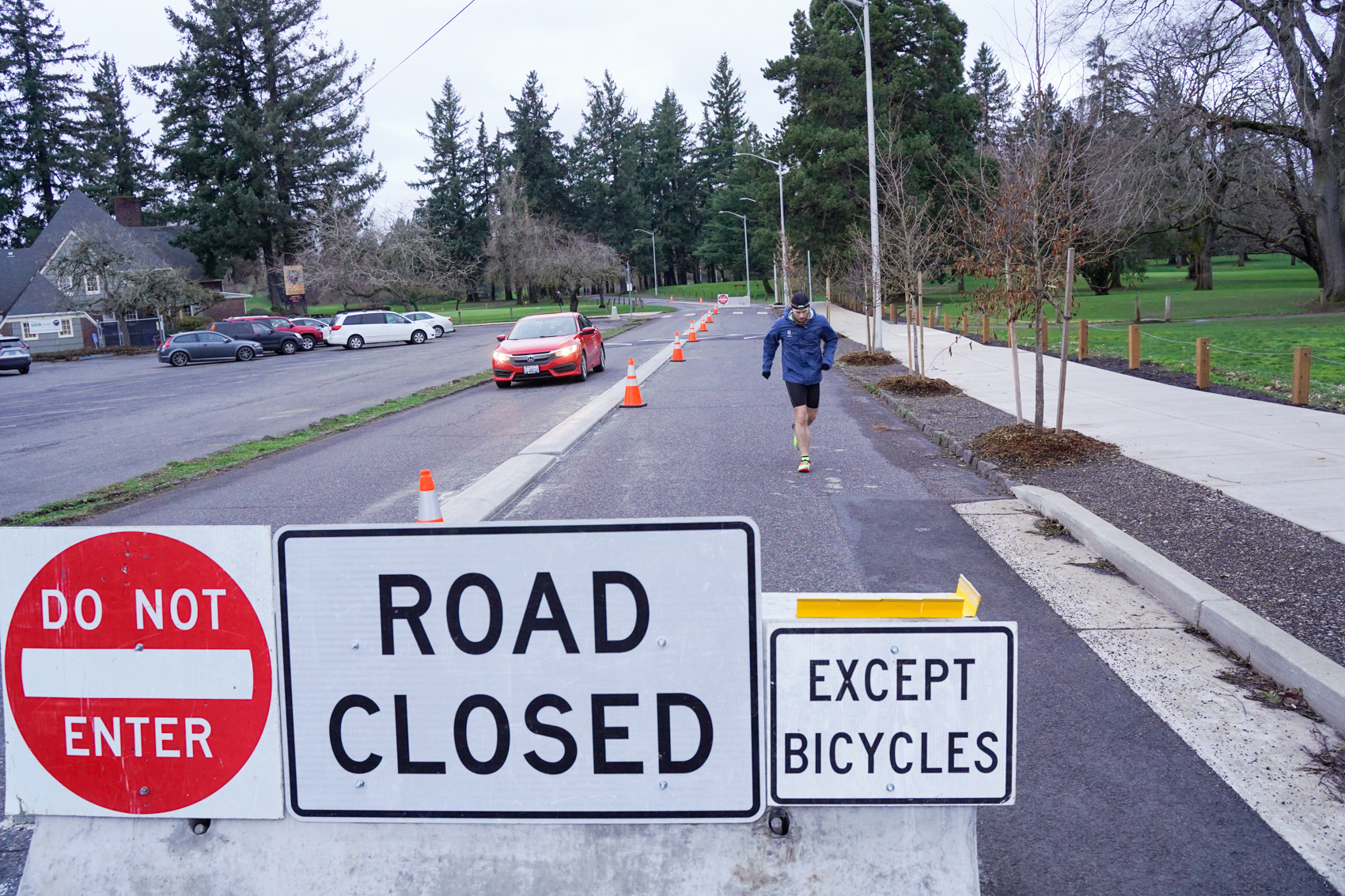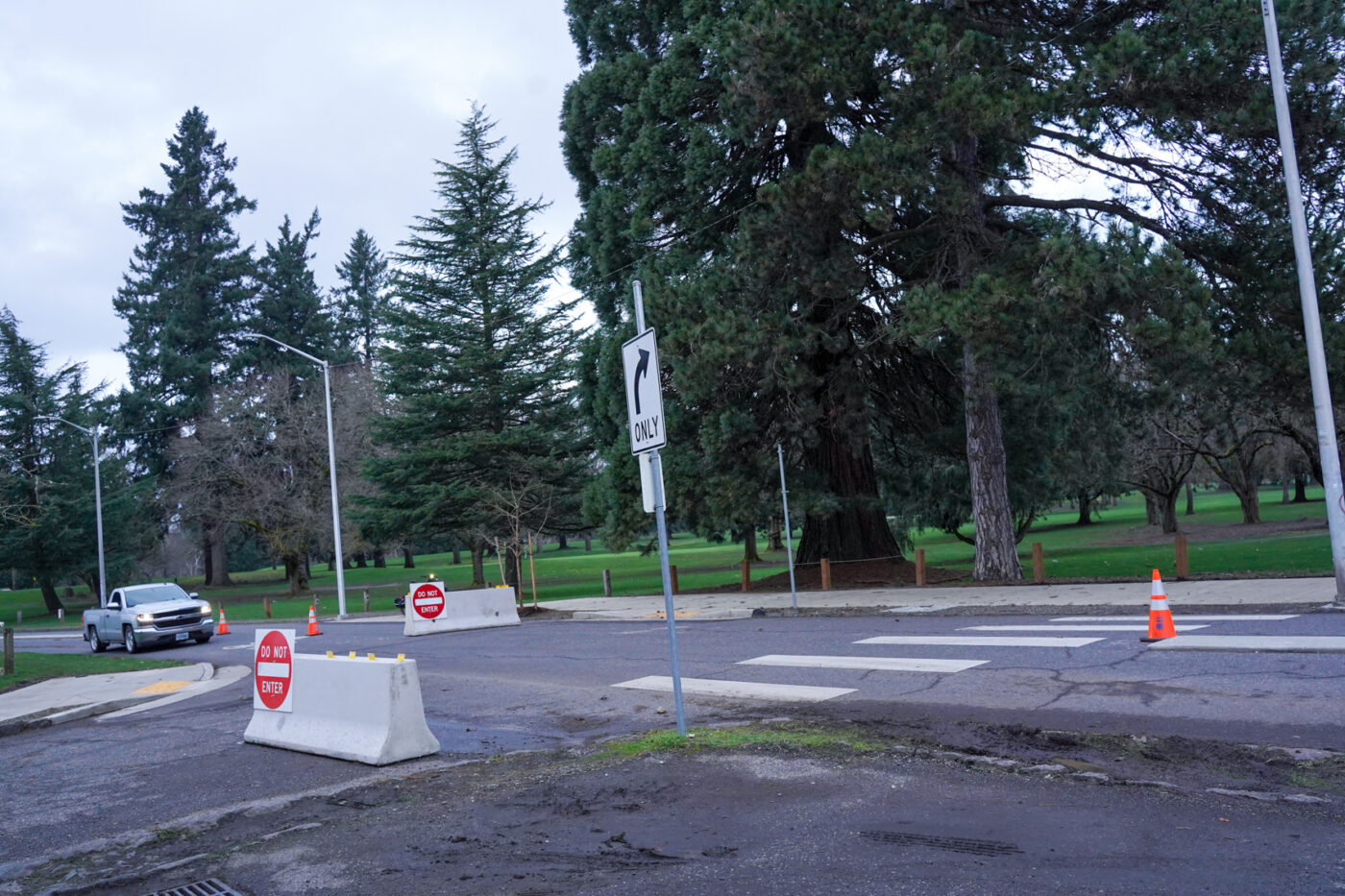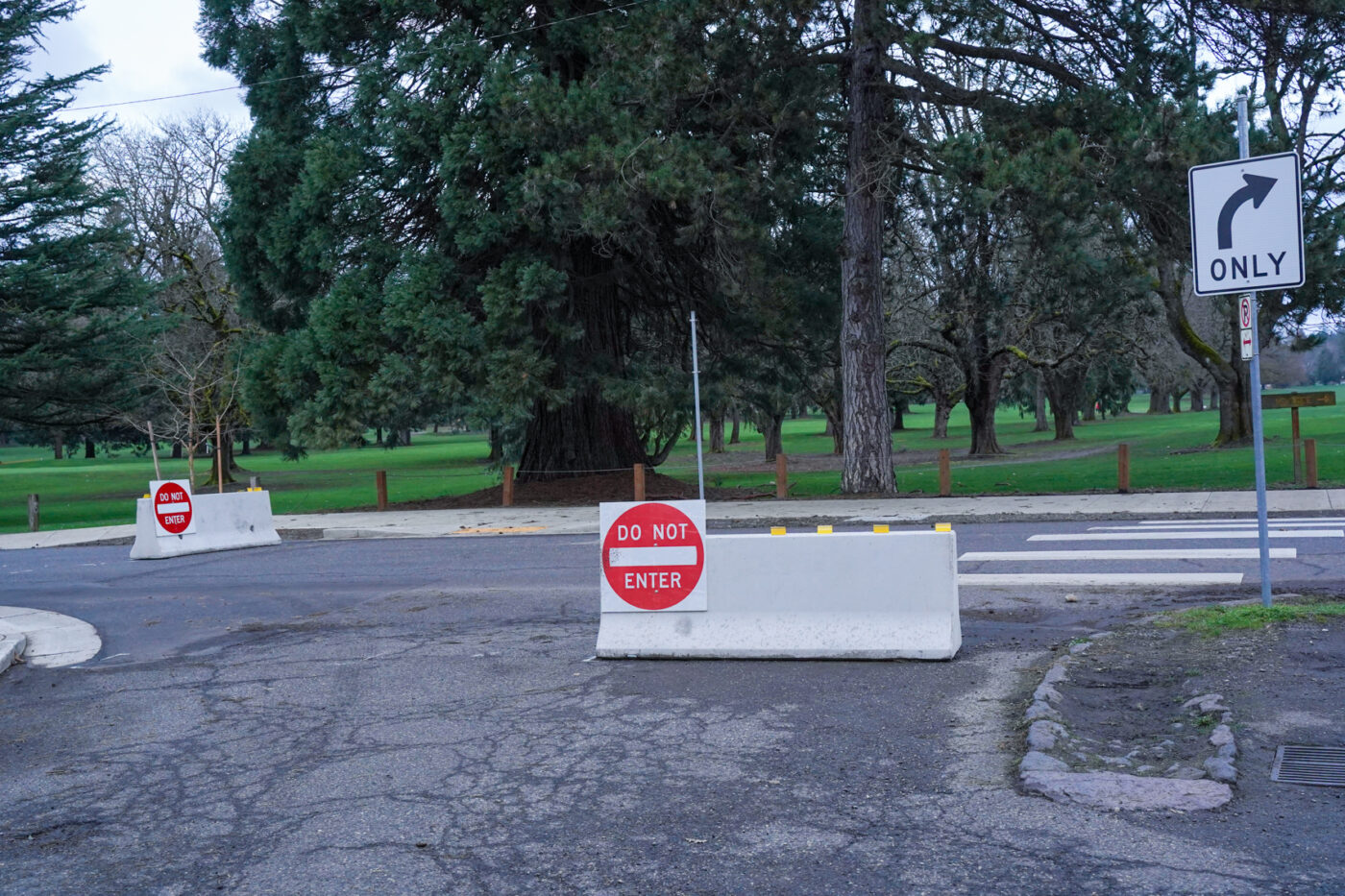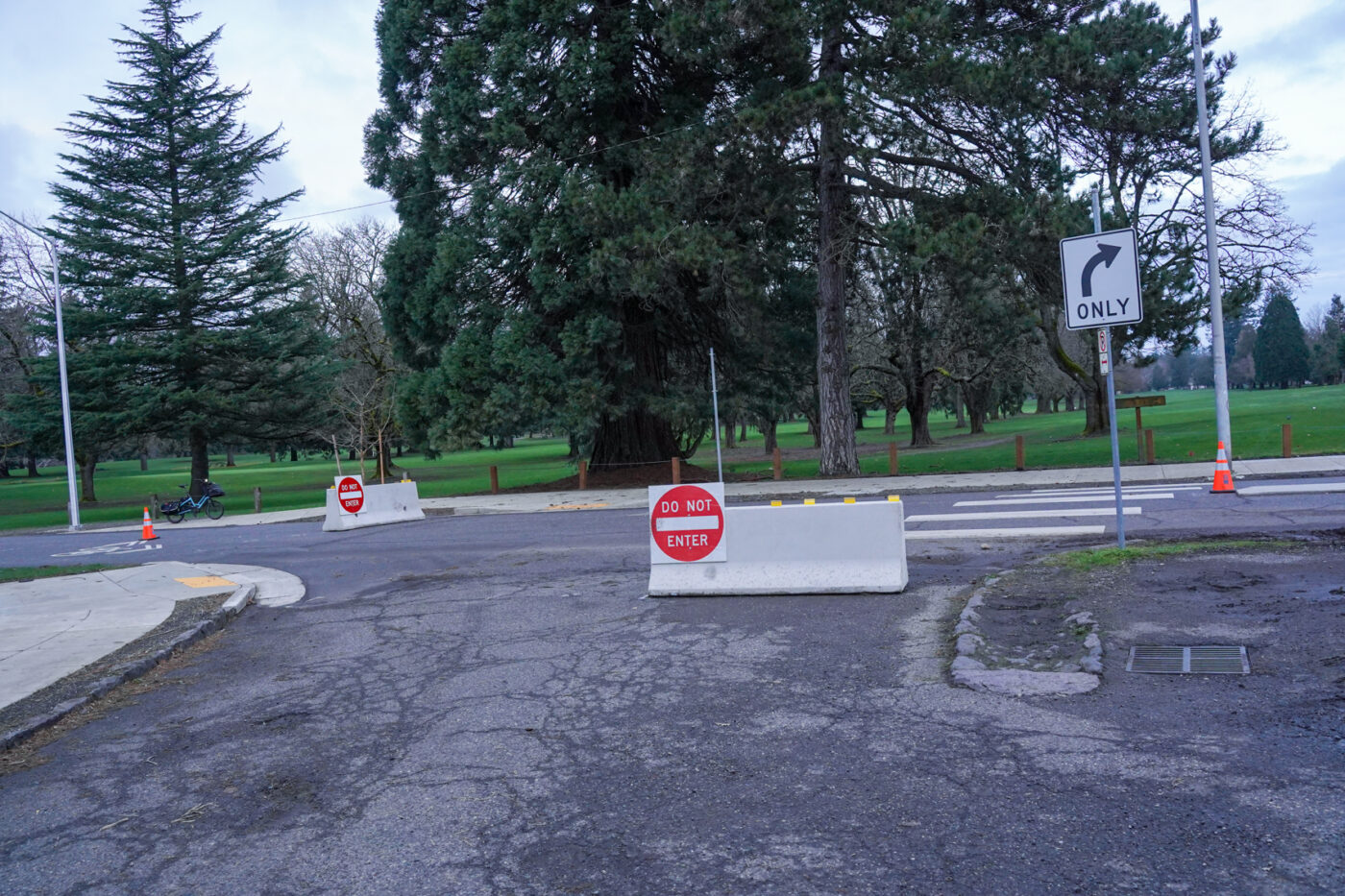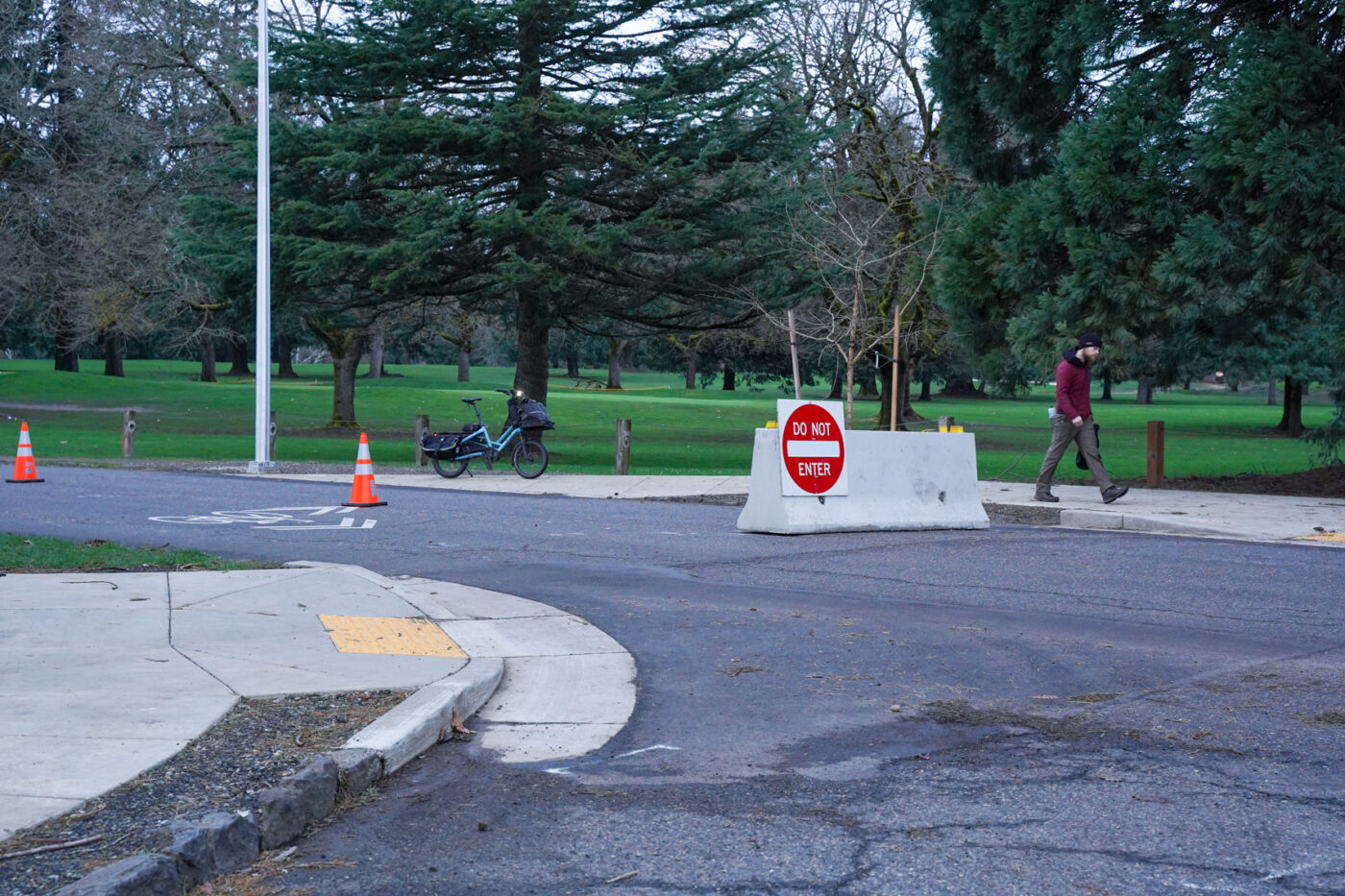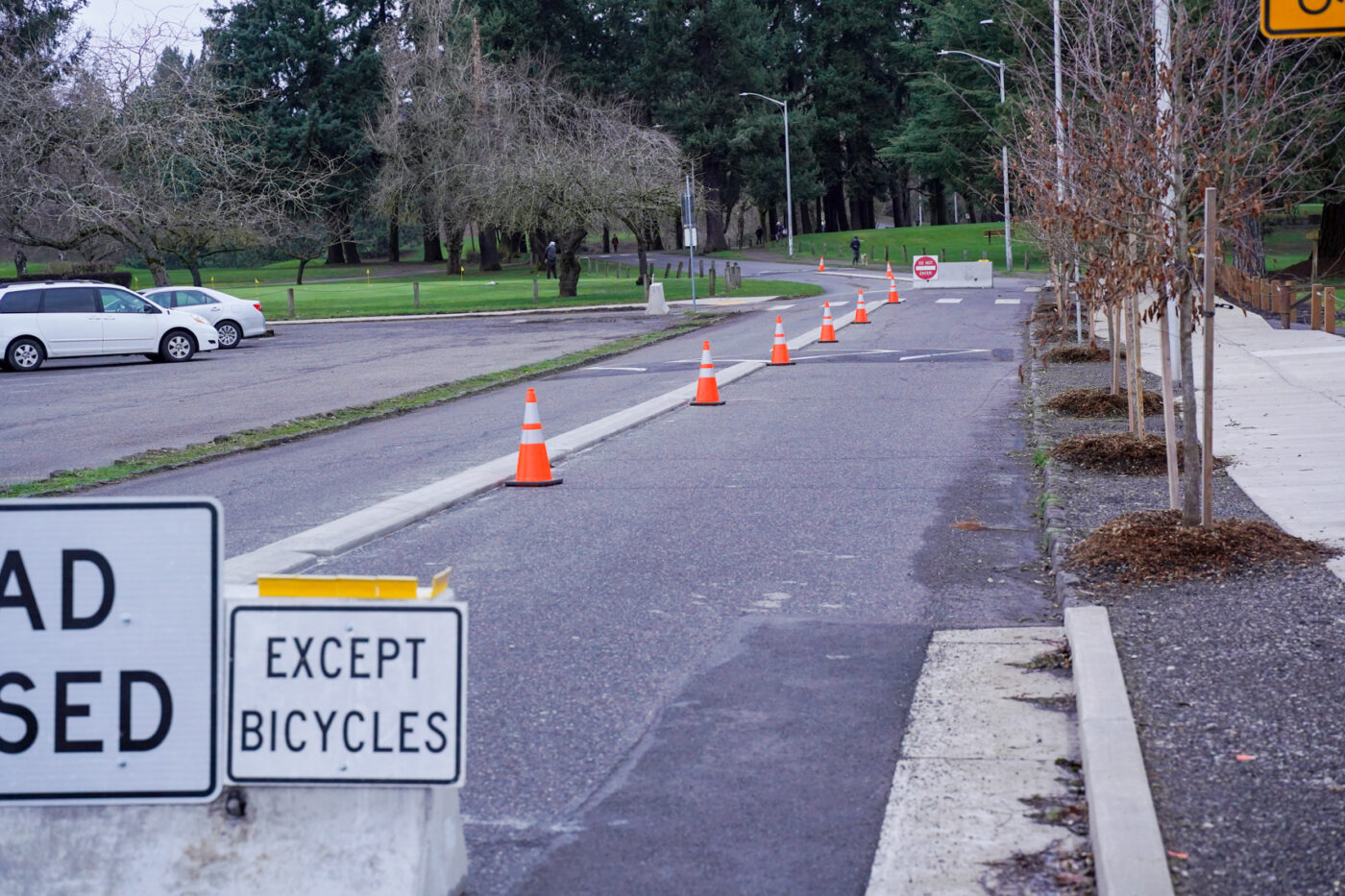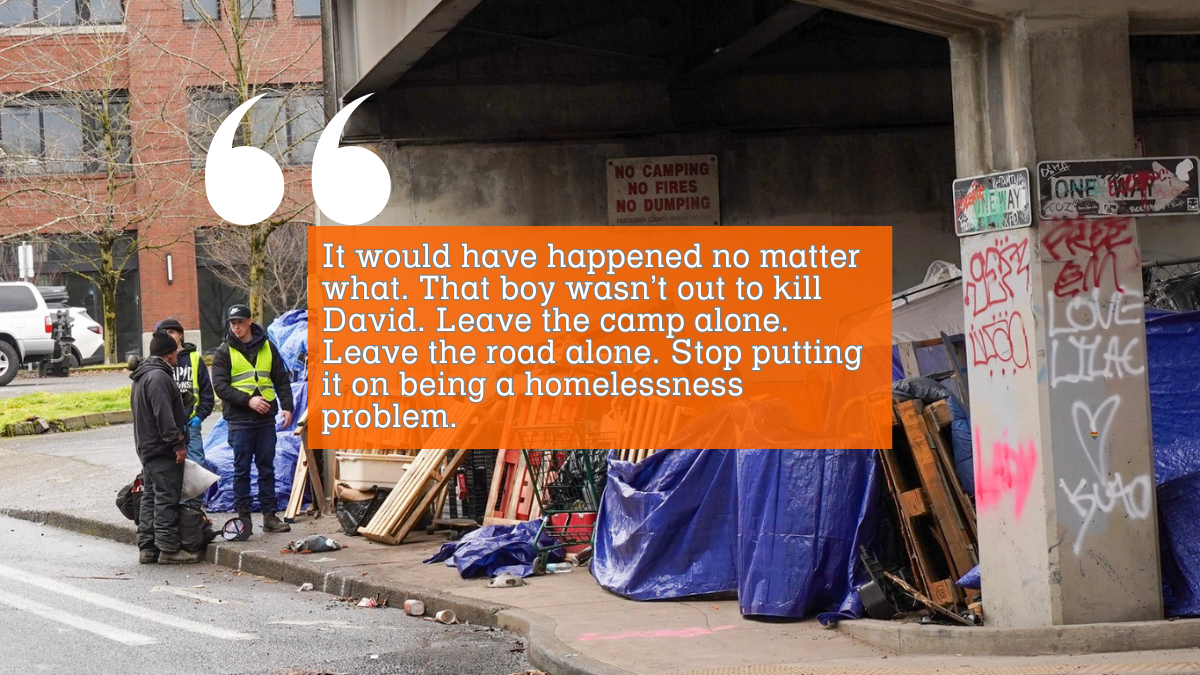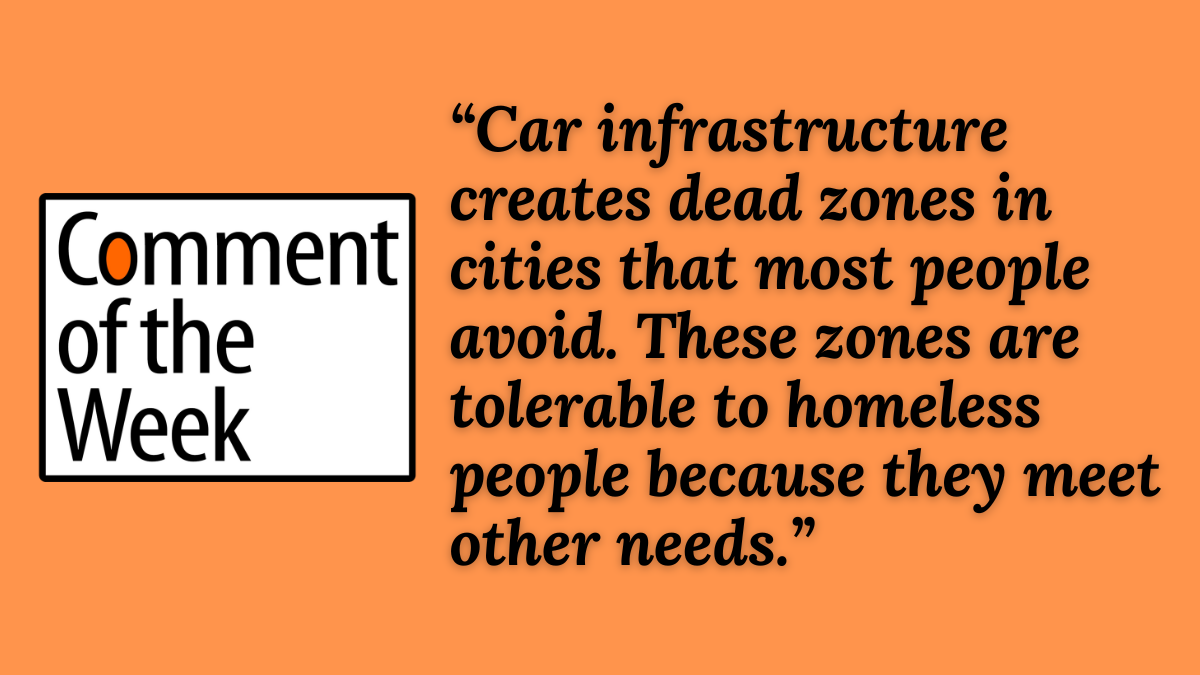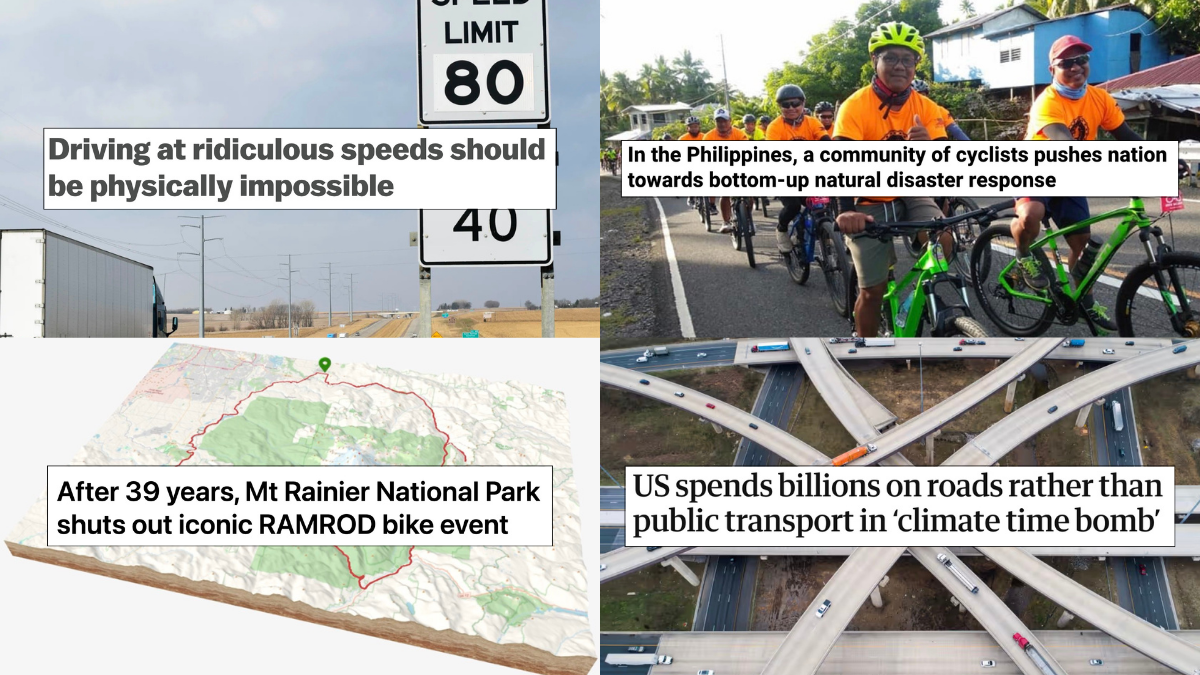Few people in Portland know more about our city’s bicycle parking policy than Chris Smith. During my chat with him yesterday he shared a history of the issue and we talked about recent efforts by the City of Portland and State of Oregon to roll back code requirements that encourage more bicycle parking. You can watch our conversation above (along with helpful graphics spliced-in along the way), or find it wherever you get your podcasts.
Smith is the consummate transportation reform activist who’s been involved with numerous efforts and projects over the years. I first knew him as creator of the excellent blog Portland Transport (first mentioned on BikePortland in 2005!) which still serves our community as a repository of KBOO Bike Show episodes. He’s also the inventor of the “Transit Appliance” — a wonderful device that posts transit arrival times and can be found at bus and MAX stations citywide. Smith has also been a candidate for Portland City Council and Metro Council. Smith has fought freeway expansions for nearly two decades and was a major voice against the Columbia River Crossing project and a co-founder of the group No More Freeways. And those are just some of his bona fides!
Smith was pulled into bicycle parking specifically for his expertise in how bikes mix with transit gleaned from his long-time position on the board (and as vice-chair) of Portland Streetcar Inc. (the private nonprofit contracted by the City of Portland to help plan and manage the streetcar). After the City’s Bicycle Plan for 2030 passed in 2010 and ridership skyrocketed, Smith was tapped to help update the code so that the hordes of local riders would have a proper place to park their bikes. BikePortland worked with Smith to host two events (one in 2013 and another in 2018) to garner input on the bike parking code and that effort led to a major update that passed Portland City Council in 2019.
Then Portland lost its bicycling mojo, the housing shortage became a crisis, and the politics shifted. As we reported here in detail over the past year or so, Portland’s vaunted bike parking code was put on the chopping block by Bureau of Planning & Sustainability Commissioner Carmen Rubio as part of a “housing regulatory reform” package. In my conversation with Smith, you’ll hear how and why this all went down, as well as the lessons he’s learned along the way.
We also talk about Oregon Governor Tina Kotek’s big housing bill passed just this week by the Oregon Legislature. One of them, Senate Bill 1537, included a relatively unknown provision that gives cities the ability to adjust their bike parking requirements to spur housing production.
Below are a few highlights from our conversation (which you can also listen to via our podcast in the player below):
Jonathan Maus:
“It also is worth saying that there was some really valid criticism [of our bike parking code]. You and I are working in the policy realm talking about words in a code. But people implementing this stuff down at the design review office or the permit office, they actually have people telling them what they can and can’t build and I think maybe one of the lessons here is this stuff can get pretty complicated and very troublesome. And we had somebody on the board of The Street Trust who was one of the biggest critics of the bike parking requirements. And I think probably had something to do with swaying the adoption at Planning Commission of rolling them back.”
Chris Smith:
“Right. It got really interesting politically for me because I had two groups that I consider myself a member of, the bicycle community and the pro-housing community…I’m a member of Portland Neighbors Welcome and I’m a member of BikeLoud PDX, who said, ‘What? You’re going to take away our parking? Come on!’ So I actually spent some energy trying to make sure those two groups didn’t go at each other’s throats”
Chris Smith:
“The [required bike parking] ratios got tweaked down. So instead of 1.5 and 1.1 [per dwelling unit], they go to 1.0 and 0.7 in the outer pattern areas. And that’s in effect for five years. So it’s not forever. And to my mind, that kind of makes sense in terms of balancing economics.
But the alcove standard [something Smith fought for in the bike parking code update to encourage higher-quality, in-unit bike storage] went away permanently, and I think that’s going to be a problem because if, if half the parking we build is ineffective in-unit parking, the it’s more like we have 0.5 left. Right? The other thing that was taken away was a standard we put in that a small percentage in large buildings had to be larger cargo bike spaces… So for five years [Portland is no longer] requiring building spaces for cargo bikes. And I think we got to have a public policy discussion about where those go.”
Jonathan Maus:
“I think the production of housing absolutely trumps in many ways, the ability to bike to that housing. But I wonder if you have any thoughts about that? Is it a choice between housing production or bike parking, and how can we avoid that going forward?”
Chris Smith:
“I think maybe one lesson I’ve learned is that 2019 package [of bike parking code updates] was kind of a gold-plated package. It was our first shot since the 1990s [to update the code] and we went for it; and we were successful in landing it. And maybe we overreached a little bit and I think we have room to go back and tweak that a little bit with some of the bike room standards and whatnot.
But, maybe we overshot a bit — it’s still the case that our Comprehensive Plan calls for us to have a 25 percent bicycle mode share by 2030. And the fact that we are not getting that mode share has some pretty devastating consequences in terms of traffic congestion in the city. Right? And if we don’t get there, eventually, we have to spend a lot more money on roads that we don’t have.”
Jonathan Maus:
“Do you have any faith there’ll be an opportunity to bring up bike parking [code revisions] sooner than later [the five-year sunset council passed]? Especially with the whole entire council change that’s going to happen in Portland with a bunch of new councilors and maybe more people who could spend some time on the policy side of this?”
Chris Smith:
“I hope. And I’ll be advocating for addressing some of the standards issues before that like the in-unit parking standard and what do we do about cargo bikes question. I’m a little bit dubious that we can revisit the [required bike parking per unit] ratios before the five years just because of the real impact and housing economics. I wish I could believe we’d be out of the housing crisis in five years. Given how many units we’re down compared to where we need to be – I don’t know that. So I’m much more focused on the standards and making sure that what we build is effective.”
And there was one question Smith wanted to make sure I posed to you. Please read it below and share your response so he can accurately represent our needs in his advocacy…
Chris Smith:
“I’m still fascinated by the bike room versus the in-unit question: Who wants to store their bike in their apartment versus in a bike room and why? Because to me, it seems like the vast majority of people, at least cycling for transportation, would want to be in a bike room. If you have a $10,000 racing bike, sure you might want to put that next to your bed. I can understand that. But for folks who are cycling for transportation, what do people really think about that?”
You can watch our full conversation along with helpful graphics by watching the video above, or listen wherever you get your podcasts.























